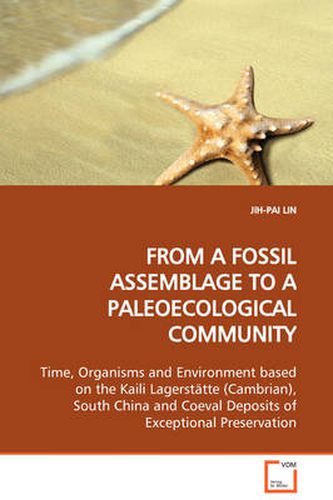Readings Newsletter
Become a Readings Member to make your shopping experience even easier.
Sign in or sign up for free!
You’re not far away from qualifying for FREE standard shipping within Australia
You’ve qualified for FREE standard shipping within Australia
The cart is loading…






This title is printed to order. This book may have been self-published. If so, we cannot guarantee the quality of the content. In the main most books will have gone through the editing process however some may not. We therefore suggest that you be aware of this before ordering this book. If in doubt check either the author or publisher’s details as we are unable to accept any returns unless they are faulty. Please contact us if you have any questions.
The Cambrian Period (542 to 488 Ma) marks the beginning of an abundant fossil record, and the Burgess Shale Biota was the first fully described fossil assemblage that contains a relatively complete picture of a benthic Cambrian community. More Burgess Shale-type (BST) fossil assemblages have been discovered since then and are ready to be utilized to test hypotheses about the ecology of the Cambrian explosion, which is the most important event in the evolution of metazoans. This book focuses on the Kaili Biota (http://hdl.handle.net/1811/24227), an important deposit bridging the stratigraphic gap between Chengjiang Biota and Burgess Shale Biota. It allows us to gain a more complete understanding of the Cambrian life through the window of BST deposits. The book is divided into four parts. Part 1 includes stratigraphic background of Kaili Formation. Part 2 contains discussions on taphonomy. Part 3 provides new observation for Cambrian paleoecology, including animal-substrate relations, spawning habits, teiring community, and faunal succession. Part 4 presents hypotheses on arthropod, echinoderm evolution, and the evolution of biosphere.
$9.00 standard shipping within Australia
FREE standard shipping within Australia for orders over $100.00
Express & International shipping calculated at checkout
This title is printed to order. This book may have been self-published. If so, we cannot guarantee the quality of the content. In the main most books will have gone through the editing process however some may not. We therefore suggest that you be aware of this before ordering this book. If in doubt check either the author or publisher’s details as we are unable to accept any returns unless they are faulty. Please contact us if you have any questions.
The Cambrian Period (542 to 488 Ma) marks the beginning of an abundant fossil record, and the Burgess Shale Biota was the first fully described fossil assemblage that contains a relatively complete picture of a benthic Cambrian community. More Burgess Shale-type (BST) fossil assemblages have been discovered since then and are ready to be utilized to test hypotheses about the ecology of the Cambrian explosion, which is the most important event in the evolution of metazoans. This book focuses on the Kaili Biota (http://hdl.handle.net/1811/24227), an important deposit bridging the stratigraphic gap between Chengjiang Biota and Burgess Shale Biota. It allows us to gain a more complete understanding of the Cambrian life through the window of BST deposits. The book is divided into four parts. Part 1 includes stratigraphic background of Kaili Formation. Part 2 contains discussions on taphonomy. Part 3 provides new observation for Cambrian paleoecology, including animal-substrate relations, spawning habits, teiring community, and faunal succession. Part 4 presents hypotheses on arthropod, echinoderm evolution, and the evolution of biosphere.